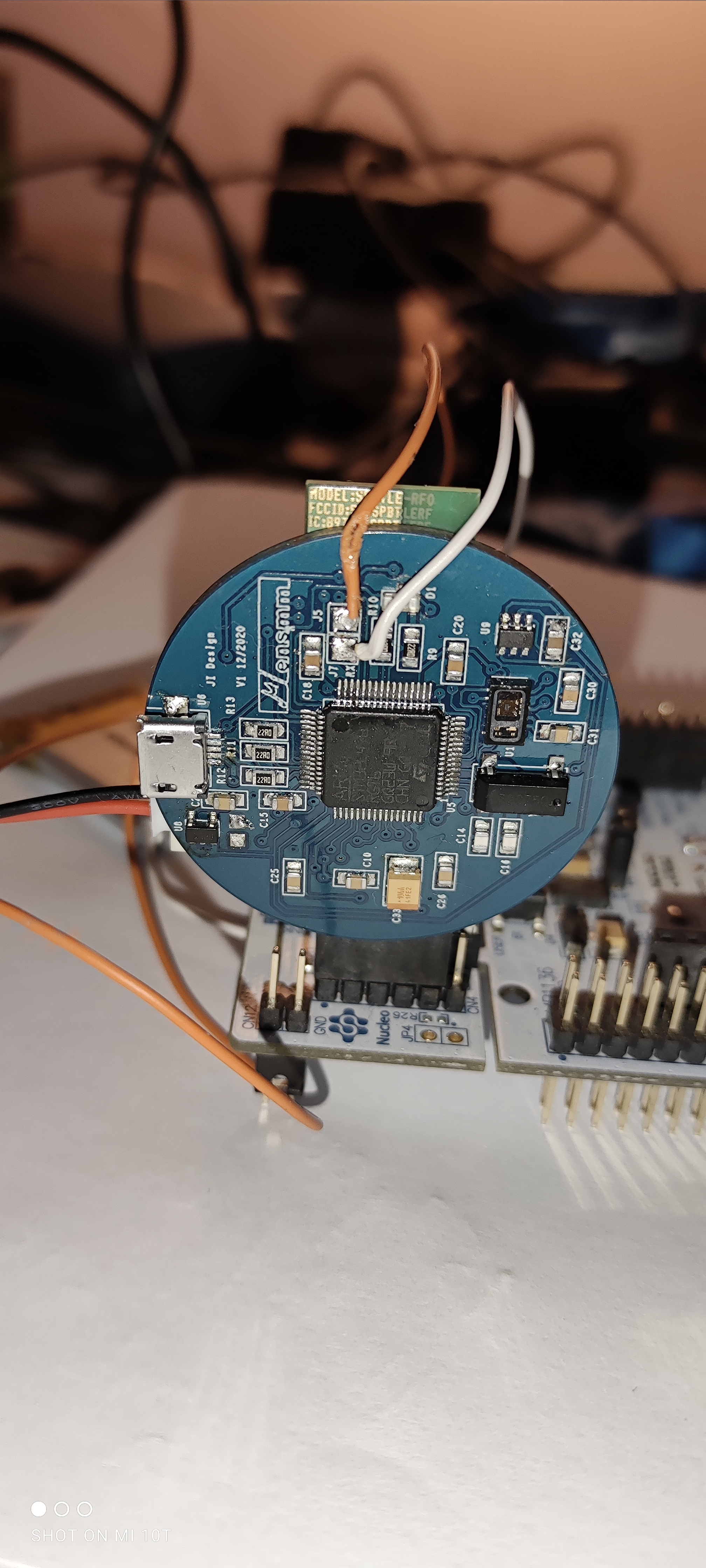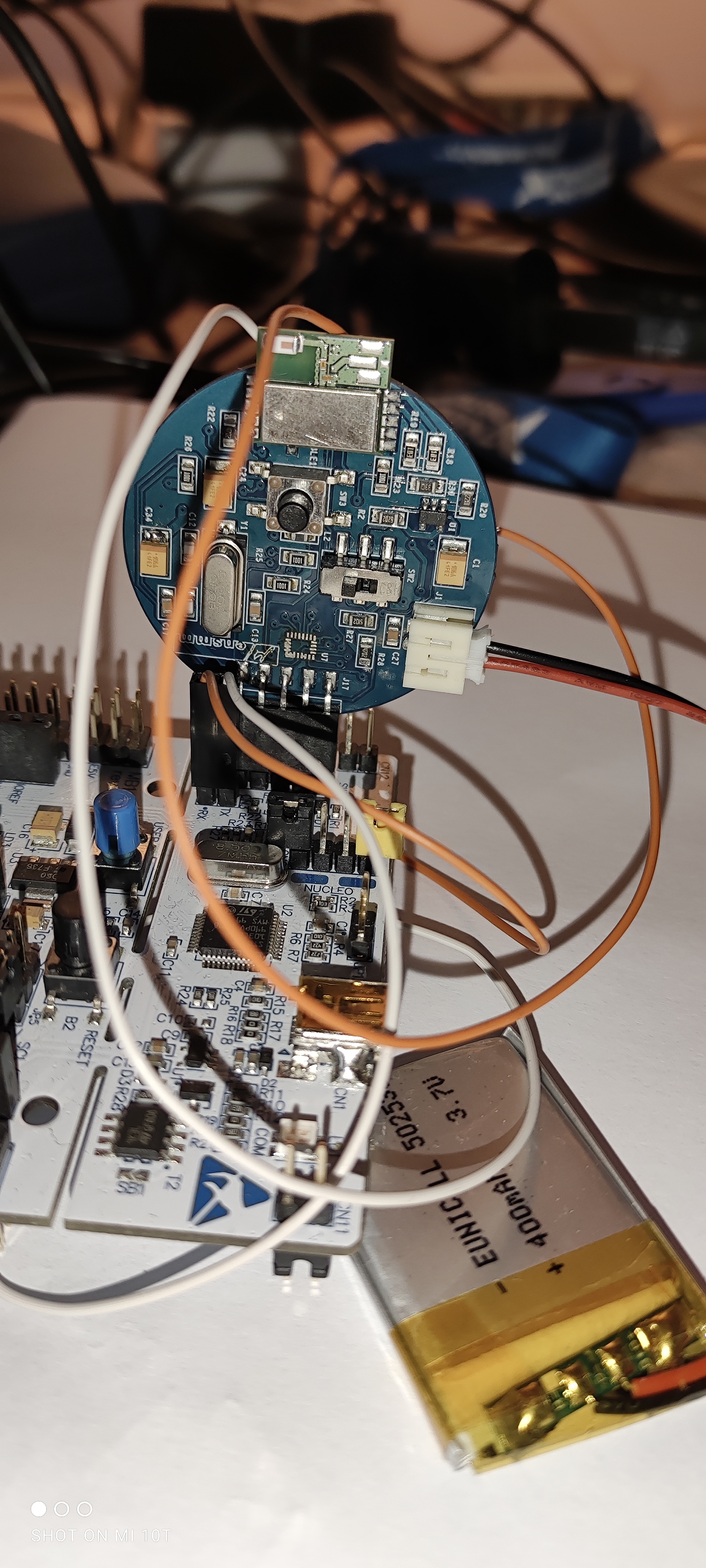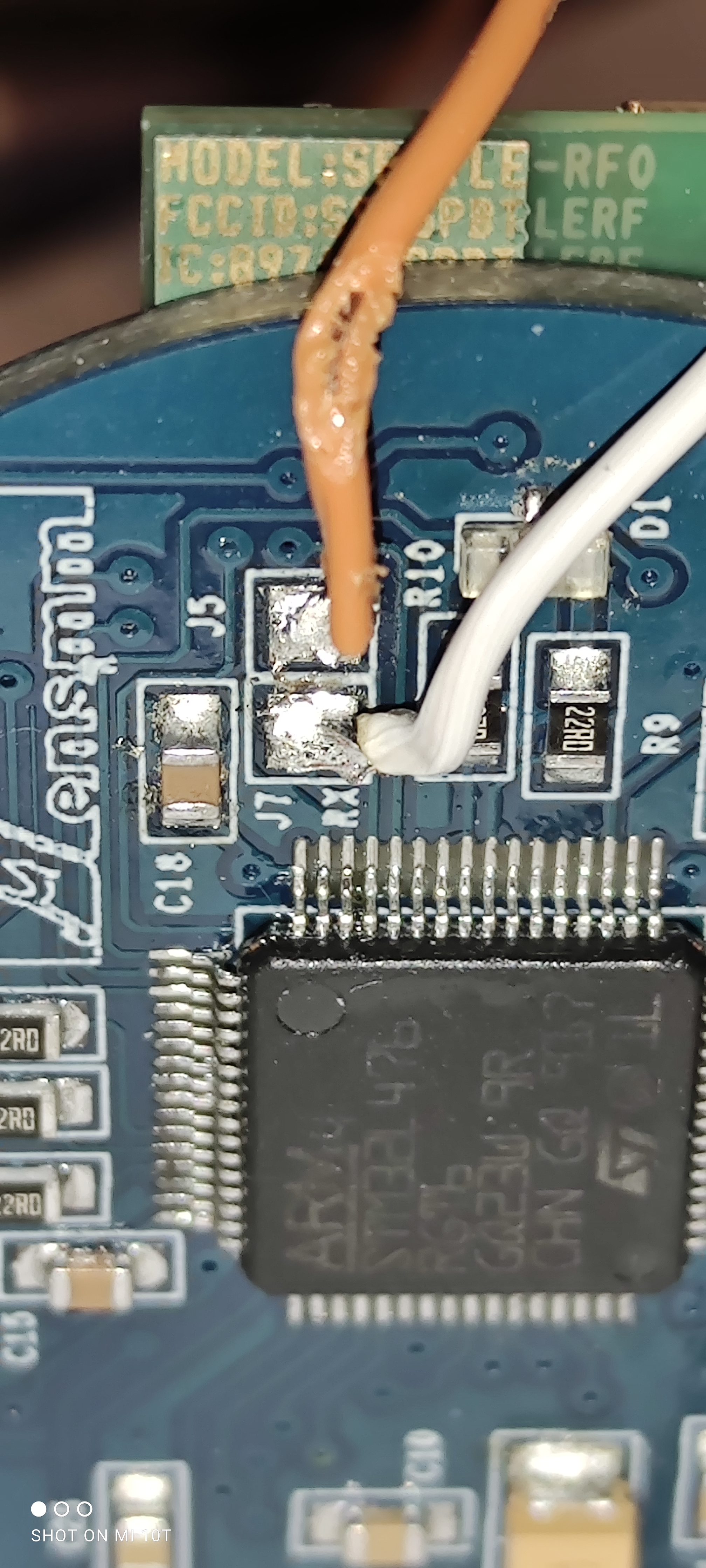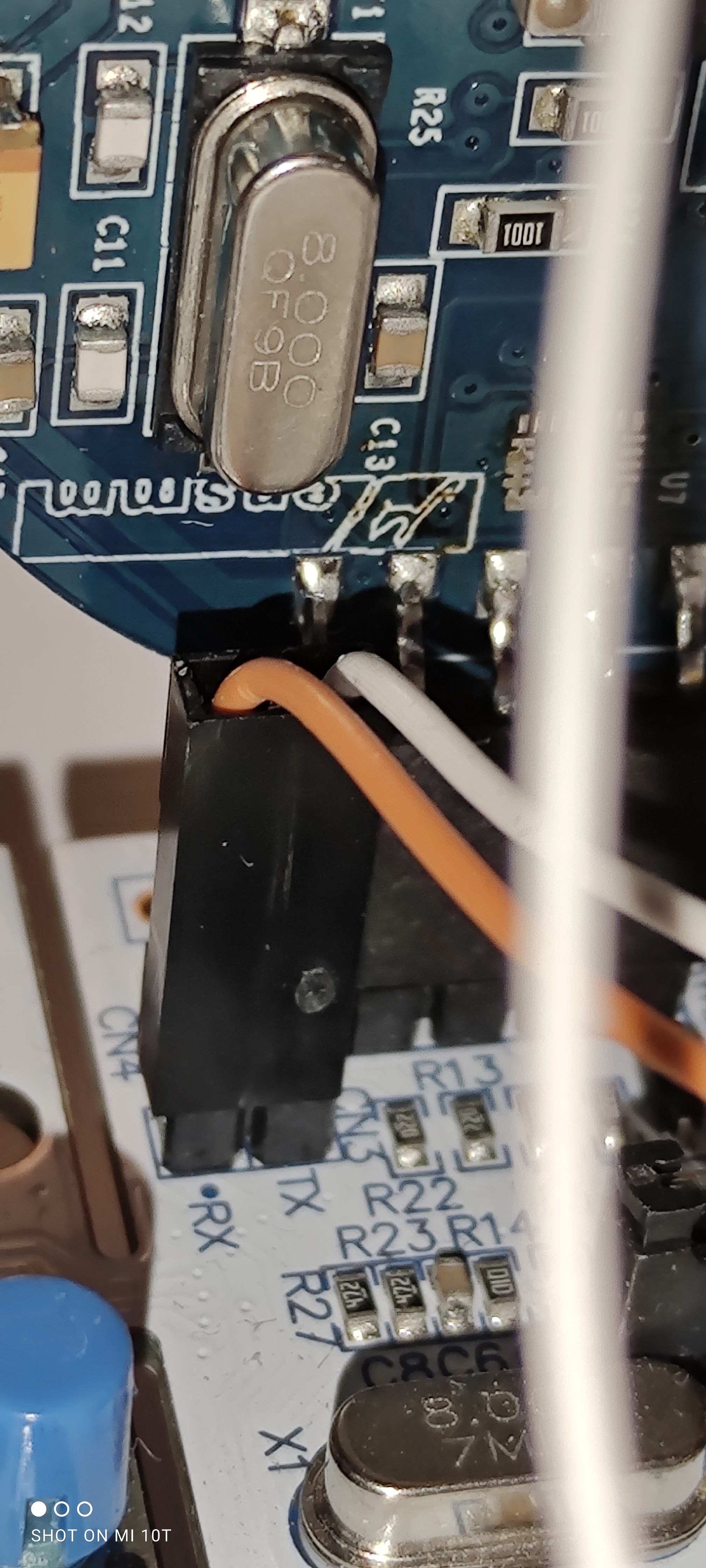Test program for a Max30102 heartrate sensor on a STM32L476RG specific board ENSMM
Dependencies: mbed
These two pictures show how to connect the Mheuve Sensor to the ST-Link debugger (don't forget to disable ST-link jumpers and JP5 on the board! ):


These two pictures show how to connect the Mheuve Sensor TX RX to the ST-Link debugger (don't forget to cross TX and RX, it means Mheuve sensor TX on ST-Link RX and ST-Link TX on Mheuve sensor RX ):


The Mheuve sensor board needs to be powered by an external battery.
The result appears on the terminal, speed config is 115200 bds.

main.cpp
- Committer:
- jimbaud
- Date:
- 2021-01-27
- Revision:
- 5:648aa1e83d65
- Parent:
- 4:5273ab1085ab
File content as of revision 5:648aa1e83d65:
#include "mbed.h"
#include "algorithm.h"
#include "MAX30102.h"
#define MAX_BRIGHTNESS 255
uint32_t aun_ir_buffer[500]; //IR LED sensor data
int32_t n_ir_buffer_length; //data length
uint32_t aun_red_buffer[500]; //Red LED sensor data
int32_t n_sp02; //SPO2 value
int8_t ch_spo2_valid; //indicator to show if the SP02 calculation is valid
int32_t n_heart_rate; //heart rate value
int8_t ch_hr_valid; //indicator to show if the heart rate calculation is valid
uint8_t uch_dummy;
Serial pc(PB_10, PB_11); //initializes the serial port
DigitalOut led(PC_4); //initializes the pwm output that connects to the on board LED
DigitalIn INT(PC_13); //pin PTD1 connects to the interrupt output pin of the MAX30102
DigitalOut VEN(PC_2);
// the setup routine runs once when you press reset:
int main() {
uint32_t un_min, un_max, un_prev_data; //variables to calculate the on-board LED brightness that reflects the heartbeats
int i;
int32_t n_brightness;
float f_temp;
maxim_max30102_reset(); //resets the MAX30102
// initialize serial communication at 115200 bits per second:
pc.baud(115200);
pc.format(8,SerialBase::None,1);
wait(1);
led = 1;
//read and clear status register
maxim_max30102_read_reg(0,&uch_dummy);
VEN = 1;
maxim_max30102_init(); //initializes the MAX30102
n_brightness=0;
un_min=0x3FFFF;
un_max=0;
n_ir_buffer_length=500; //buffer length of 100 stores 5 seconds of samples running at 100sps
//read the first 500 samples, and determine the signal range
for(i=0;i<n_ir_buffer_length;i++)
{
//while(INT.read()==1); //wait until the interrupt pin asserts
maxim_max30102_read_fifo((aun_red_buffer+i), (aun_ir_buffer+i)); //read from MAX30102 FIFO
if(un_min>aun_red_buffer[i])
un_min=aun_red_buffer[i]; //update signal min
if(un_max<aun_red_buffer[i])
un_max=aun_red_buffer[i]; //update signal max
pc.printf("red=");
pc.printf("%i", aun_red_buffer[i]);
pc.printf(", ir=");
pc.printf("%i\n\r", aun_ir_buffer[i]);
}
un_prev_data=aun_red_buffer[i];
//calculate heart rate and SpO2 after first 500 samples (first 5 seconds of samples)
maxim_heart_rate_and_oxygen_saturation(aun_ir_buffer, n_ir_buffer_length, aun_red_buffer, &n_sp02, &ch_spo2_valid, &n_heart_rate, &ch_hr_valid);
//Continuously taking samples from MAX30102. Heart rate and SpO2 are calculated every 1 second
while(1)
{
i=0;
un_min=0x3FFFF;
un_max=0;
//dumping the first 100 sets of samples in the memory and shift the last 400 sets of samples to the top
for(i=100;i<500;i++)
{
aun_red_buffer[i-100]=aun_red_buffer[i];
aun_ir_buffer[i-100]=aun_ir_buffer[i];
//update the signal min and max
if(un_min>aun_red_buffer[i])
un_min=aun_red_buffer[i];
if(un_max<aun_red_buffer[i])
un_max=aun_red_buffer[i];
}
//take 100 sets of samples before calculating the heart rate.
for(i=400;i<500;i++)
{
un_prev_data=aun_red_buffer[i-1];
while(INT.read()==1);
maxim_max30102_read_fifo((aun_red_buffer+i), (aun_ir_buffer+i));
if(aun_red_buffer[i]>un_prev_data)
{
f_temp=aun_red_buffer[i]-un_prev_data;
f_temp/=(un_max-un_min);
f_temp*=MAX_BRIGHTNESS;
n_brightness-=(int)f_temp;
if(n_brightness<0)
n_brightness=0;
}
else
{
f_temp=un_prev_data-aun_red_buffer[i];
f_temp/=(un_max-un_min);
f_temp*=MAX_BRIGHTNESS;
n_brightness+=(int)f_temp;
if(n_brightness>MAX_BRIGHTNESS)
n_brightness=MAX_BRIGHTNESS;
}
led = 1;
//send samples and calculation result to terminal program through UART
pc.printf("red=");
pc.printf("%i", aun_red_buffer[i]);
pc.printf(", ir=");
pc.printf("%i", aun_ir_buffer[i]);
pc.printf(", HR=%i, ", n_heart_rate);
pc.printf("HRvalid=%i, ", ch_hr_valid);
pc.printf("SpO2=%i, ", n_sp02);
pc.printf("SPO2Valid=%i\n\r", ch_spo2_valid);
// wait(1);
}
maxim_heart_rate_and_oxygen_saturation(aun_ir_buffer, n_ir_buffer_length, aun_red_buffer, &n_sp02, &ch_spo2_valid, &n_heart_rate, &ch_hr_valid);
}
}